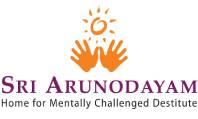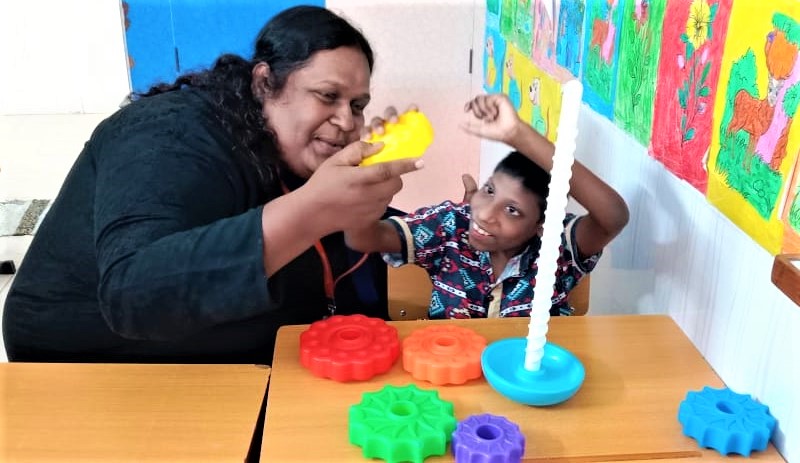India’s future pivots on equal opportunity education for all
– By Iyyappan Subramaniyan
A lot is being said about India becoming the world’s fastest growing economy, and while that is exciting news, it doesn’t appear to matter much to the common man or woman struggling to support a family and put food on the table. Neither is it important to the child with disabilities in remote regions who still has little or no access to good education, and to sections of society still being discriminated against and deprived of their basic rights. Debates on the GDP and economic growth lose relevance to the common man who may or may not understand politics and the workings of an economy. But one thing we can all understand is that good governance based on accountability, integrity, and transparency is key to sustainable economic growth. And the cornerstone of good governance is value-based education.
Education for the differently abled
In 2011, around 7.62 percent of India’s total population with disability was children, says Sanyukta Kanwal in a study on disabled children among disabled people in India. This is approximately 2.04 million children out of 26.8 million disabled people. [1] Thus inclusive education has been gaining importance and its purpose is to assimilate children with special needs with the regular class. The Right of Children to Free and Compulsory Education Act or Right to Education Act (RTE) ensures that all children in India between 6 to 14 years of age get free and compulsory education. It also entitles students with disabilities to have access to free textbooks, study materials, and specific learning opportunities. India became one of 135 countries to make education a fundamental right of every child when the act came into force on 1st April 2010, [2] but there is still much to be done to make this a reality.
Sri Arunodayam was registered as a charitable trust in 2002 and commenced with a single home for abandoned children with intellectual disabilities (ID) in Chennai, India. Registered under the Juvenile Justice (Care & Protection of Children) Act, Sri Arunodayam built its foundation on humanitarian values that uphold the dignity and rights of such children, providing them with rehabilitation therapies for personal development and integration back into society. Today, Sri Arunodayam runs two homes – one each for abandoned boys and girls with ID and is building an aftercare home for youngsters with ID above the age of 18. Sri Arunodayam’s special education program commenced in 2007 with a vision to provide equal opportunity education, and prepare the children in its care to fully embrace life through a value-based educational program that nurtures their passions, critical and creative thinking skills, and problem-solving abilities. The program leverages the holistic interaction of an entire panel of experts and the community, through classroom and outdoor learning experiences.
Leveraging established models of special education
Educational programs must be driven by curriculums that enable the achievement of stated goal(s). Sri Arunodayam follows two models of education for children with special needs. These are:
Madhuram Narayanan Centre – Upanayana System, which has 5 domains of development such as motor, self-help, language, cognition, and socialization, each of which fosters the building of 50 skills, [3]amounting to a total of 250 skills in sequential order of development. This is a comprehensive Individualized Education Program (IEP) for children with developmental delay from 0 to 6 years of age.
The Madras Developmental Programming System (MDPS) covers 18 domains of development, each fostering the building of 20 skills, amounting to a total of 360 skills sequentially arranged according to normal development. [4] The 18 domains are: gross motor activities, fine motor activities, meal time activities, dressing, grooming, toileting, receptive language, expressive language, social interaction, reading, writing, numbers, time, money, domestic activities, community orientation, recreation (leisure time activities), and vocational. For example: gross motor activities develops 20 skills in relation to head movement, standing, sitting, pushing, running, and more; fine motor activities develop 20 wrist and finger movement skills like handling objects, cutting, threading, and more. This is a comprehensive program for children with developmental delay between 7 and 18 years of age.
Commitment to equal opportunity education
Sri Arunodayam leverages these tested curriculums with a goal to make children with developmental delay fully functional and independent. These types of education models also help them overcome emotional, behavioral, and cognitive impairments with intellectual, hearing, vision, speech, or learning disabilities. Special education instruction at Sri Arunodayam meets the unique needs of each child, helping them reach their full potential. Assessments/evaluations are performed quarterly and a variety of teaching/learning materials are called into play, including simple therapy tools like fish tanks for children with hyperactivity or autism spectrum.
Commitment to education goes hand-in-hand with growth and prosperity. Providing a wholly integrated special education program, Sri Arunodayam employs a multi-disciplinary team of medical care specialists’ like doctors, nurses, pediatricians and clinical psychologists, caregivers and teachers, speech and physiotherapists, and vocational trainers. Programs like this provide a solid foundation for children with developmental delay to draw alongside regular education curriculums, and create a healthy life for themselves by becoming actively engaged citizens. This is indeed the true cornerstone for economic growth and success!
Sri Arunodayam acknowledges with thanks the continued support and partnership of Azim Premji Foundation, and Guru Krupa Foundation USA in its special education program.
Reference
- Disabled children among disabled people in India 2011 by states and union territories, published by Sanyukta Kanwal, May 30, 2022 – https://www.statista.com/statistics/1254621/india-disabled-children-by-states-and-union-territories/
- The Right of Children to Free and Compulsory Education Act 2009 – https://en.wikipedia.org/wiki/Right_of_Children_to_Free_and_Compulsory_Education_Act,_2009
- The Madhuram Narayanan Centre – Upanayana System that was developed and designed to suit Indian socio-economic conditions and the cultural milieu.https://www.mncindia.org/upanayan.html
- Madras Developmental Programming System (MDPS) Individualized Programme Planning by Prof. P. Jeyachandran and Prof. V. Vimala in 1975 as the First Scale in India to assess people with Intellectual and Developmental Disabilities (IDD). https://www.facebook.com/Prof.P.Jeyachandran/posts/mdps-the-first-scale-in-india-to-assess-people-with-intellectual-and-development/617798938682835/
Summary
Sri Arunodayam’s special education program commenced in 2007 with a vision to provide equal opportunity education, and prepare the children in its care to fully embrace life through a value-based education program that nurtures their passions, critical and creative thinking skills, and problem-solving abilities. The program leverages the holistic interaction of an entire panel of experts and the community, through classroom and outdoor learning experiences.
Tags
Special education
Inclusive education
Children with disabilities
Special education models
Madhuram Narayanan Centre
Upanayana System
Madras Developmental Programming System
Individualized Education Program (IEP)
Rehabilitation
Gross motor activities
Fine motor activities
Receptive language
Expressive language
Social interaction
Community orientation
Vocational training

